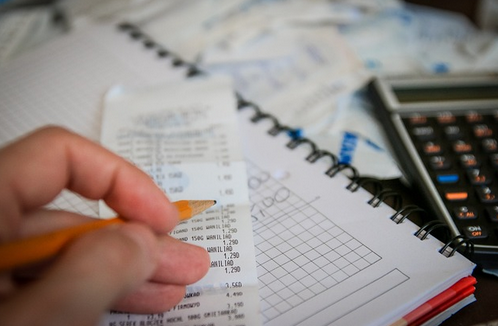The process of moving, whether to a new home or office space, demands meticulous planning to ensure a smooth transition. A key aspect of this planning involves creating a moving budget planner, a financial blueprint that guides individuals through the various costs associated with moving. This website takes in all potential expenditures, such as hiring professional movers, purchasing packing supplies, and securing storage facilities if needed. By having a detailed outline of anticipated expenses, movers can avoid unexpected costs and manage their finances more effectively throughout the moving process.
Essential elements of a moving budget planner include estimated costs for packing materials, moving company fees, insurance, and transportation. Additionally, it should consider additional services that may be necessary, such as cleaning or utility setup in the new location. Movers are encouraged to leverage free resources, such as downloadable budget templates and checklists, to facilitate organization and ensure no detail is overlooked. These tools serve as a valuable framework, helping individuals tailor their moving budget to their unique circumstances.
Planning Your Move
When planning a move, it is vital to comprehensively understand the associated costs and to develop a thorough moving budget plan. This planning not only informs one’s personal finance strategy but also ensures a smooth transition to a new location.
Understanding Moving Costs
Moving costs can vary widely based on distance, volume of belongings, and services required. The primary expenses to consider include:
- Truck Rental: Fee for renting a moving truck for transportation.
- Professional Movers: The labor cost of hiring a moving company.
- Packing Materials: The cost of boxes, tape, bubble wrap, and other supplies.
- Insurance: Optional insurance to protect belongings during the move.
- Additional Fees: Additional costs like storage, heavy item fees, or last-minute service charges.
A detailed table breaking down potential costs helps one prepare for the financial impact of the move:
| Expense Category | Details | Estimated Cost ($) |
|---|---|---|
| Truck Rental | Based on distance/size | 50 – 2000 |
| Professional Movers | Hourly or flat rate | 400 – 2000 |
| Packing Materials | Boxes, tape, etc. | 50 – 500 |
| Insurance | Coverage level | 100 – 1000 |
| Additional Fees | Storage, heavy items, etc. | 100 – 1000 |
Creating a Moving Budget Plan
A moving budget plan should encompass all possible expenses to avoid any financial surprises. Here’s how one can create a structured moving budget:
- Start by listing expected expenses using the table above as a reference.
- Estimate costs for each category based on quotes from service providers or research.
- Include a contingency fund, typically 5-10% of the total estimated moving costs, to cover unexpected expenses.
- Track spending in real-time using a digital tool or moving binder to maintain budget discipline.
By adhering to these steps, one can establish a clear financial framework for relocation, ensuring that moving costs are managed efficiently within the confines of one’s personal finance parameters.
Selecting Moving Supplies
One must carefully choose the right moving boxes and protective packing materials, as these are cornerstones of a successful and secure move. Proper selection can prevent damage to belongings and ensure an organized relocation process.
Specialized Packing Techniques
Understanding the right packing techniques is crucial for safeguarding your items during the move. Consulting with packing and crating experts can help ensure that everything from your fragile heirlooms to bulky furniture is securely wrapped, cushioned, and boxed. These experts provide insights into the best materials and strategies for effective packing and crating making the process more efficient and secure.
Choosing the Right Boxes
When selecting moving boxes, individuals should consider both size and durability. Cardboard boxes come in various sizes and are typically rated for their weight capacity. For lightweight items like blankets and clothing, extra-large boxes are suitable. In contrast, small boxes are preferable for heavier objects to ensure easy handling. Specialty moving boxes with pre-assembled dividers are ideal for glassware, while boxes designed specifically for plants cater to their unique needs.
Recommended Box Types:
- Small Boxes: For books, tools, and heavy items.
- Medium Boxes: For kitchenware and small appliances.
- Large Boxes: For clothes and larger appliances.
- Dish Pack Boxes: With dividers for glassware.
- Wardrobe Boxes: With a bar for hanging clothes.
Protective Packing Materials
The protection of one’s belongings during transit hinges on the quality and appropriateness of packing materials used. Bubble wrap is paramount for cushioning fragile items, while packing paper can fill voids in boxes to prevent item movement. For wrapping furniture and electronics, one might use stretch plastic wrap to shield against scratches and dust. Individuals should also stock up on packing tape to securely seal boxes and avoid spillage.
Essential Packing Supplies:
- Bubble Wrap: For fragile items and electronics.
- Packing Paper/Peanuts: To fill empty spaces and cushion items.
- Stretch Plastic Wrap: For furniture protection.
- Durable Packing Tape: To ensure boxes remain closed.
- Labels or Markers: To clearly identify box contents and handling instructions.
Hiring Professional Moving Services
When planning for a move, the consideration of hiring professional movers is crucial for ensuring the safe transportation of household goods. The level of service from these companies typically includes packing, loading, moving, and unloading, with options for additional services like storage and specialized handling for delicate items.
Evaluating Movers
Authorized and Licensed:
- Ensure the moving company is authorized by the U.S. Department of Transportation by requesting their DOT number.
- Verify their credentials and confirm they are licensed to perform the move, especially for interstate relocations.
Quotes and Rates:
- Obtain at least three different quotes from reputable movers to compare rates.
- Be aware that rates can be based on the weight of the furniture and other goods or the distance of the move.
- Confirm what is included in their base rate, such as the number of movers and hours of service.
Insurance and Liability
Protection for Goods:
- Professional movers usually offer different levels of liability insurance for the protection of household goods.
- It’s important to understand the differences between Full Value Protection and Released Value Protection.
Insurance Options:
- Full Value Protection: Offers comprehensive coverage for your belongings at an additional cost.
- Released Value Protection: Is typically included at no extra charge but offers minimal reimbursement.
Additional Insurance:
- Consider purchasing extra insurance if the move includes items of high value.
- Check if personal home insurance policies provide coverage for moves or if supplemental insurance is needed.
By understanding these aspects of hiring professional movers, one can ensure a smoother and more efficient moving experience, mitigating risks and avoiding potential additional costs related to the transportation and care of their belongings.
Finalizing Your Move
Finalizing a move requires careful attention to transitioning utilities and updating addresses, while also ensuring the process is as stress-free as possible.
Managing Utilities and Addresses
When it comes to utilities, the mover should complete a transfer form for essential services such as water, electricity, and gas to ensure continuous service in their new home in Austin, Texas, or elsewhere. It’s crucial to update the mailing address with the United States Postal Service by submitting a change-of-address form either online or in person. They should also notify banks, subscriptions, and notify any pertinent contacts via email.
Checklist for Utilities and Addresses:
- Submit utility transfer forms for gas, water, and electricity.
- Fill out the USPS change-of-address form.
- Update addresses with banks, subscription services, and other relevant entities.
- Secure storage for items not immediately moved to the new location.
Ensuring a Stress-Free Move
To achieve a stress-free move, a strategic approach is key. They should read through reviews of moving companies to ensure reliable service for a local move or a longer distance. Security deposits should be managed diligently, and proper paperwork for leases or home purchases finalized well in advance. Movers should create a packing plan for valuables, including a separate box or container for essentials on moving day.
Tips for a Stress-Free Move:
- Organization: Use checklists to track tasks.
- Pets: Arrange for pet sitters on moving day to reduce animal stress.
- Food: Plan meals to avoid cooking during the move and reduce food waste.
- Valuables: Pack important documents and items separately and carry them with you.
- Security Deposit: Document property conditions and negotiate the return beforehand.
By following these detailed steps, the mover can fine tune the last stages of their moving journey, ensuring that nothing is overlooked and the transition is as seamless as possible.
Need Office Space? Officefinder Can Help for FREE.


